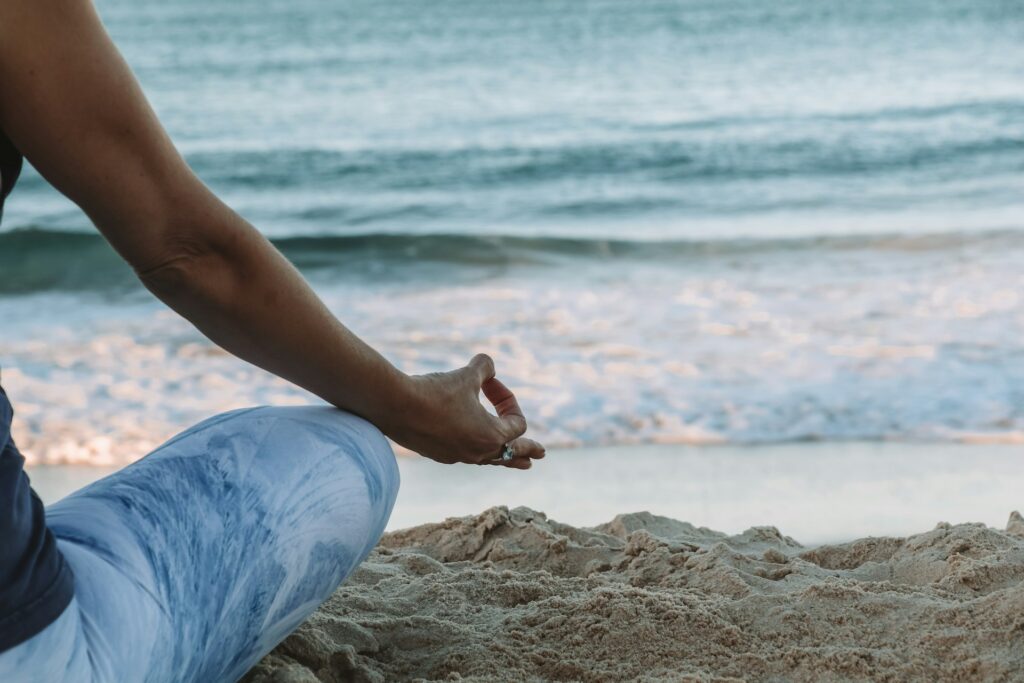You know that dull ache that’s been hanging around your neck for weeks? The one you keep telling yourself will “just go away” if you ignore it hard enough? Yeah, I used to be best friends with that mindset too. Until my body basically staged an intervention.
It was a Tuesday morning, and I was rushing to grab my laptop bag when my shoulder decided to have a full-blown rebellion. Not just the usual stiffness I’d been brushing off for months – this was a “drop everything and pay attention RIGHT NOW” kind of moment. As I stood there, laptop bag dangling from one hand, I realized I’d been having a conversation with my body for years. The problem? I’d been doing all the talking and zero listening.
The Wake-Up Call I Didn’t Know I Needed
That shoulder incident wasn’t random. Looking back, my body had been dropping hints like breadcrumbs for months. The tight jaw during stressful meetings. The way my lower back would seize up after sitting at my desk all day. The mysterious tension headaches that seemed to appear out of nowhere (spoiler alert: they weren’t from nowhere).
I’d become a master at the art of selective body awareness. I could feel when I was hungry, tired, or needed to use the bathroom – the basic survival stuff. But the subtle signals? The ones that might actually help me live better instead of just survive? Those got filed under “I’ll deal with it later” or “it’s probably nothing.”
Pain is the body’s warning light. It can mean that a muscle is strained, or that you need immediate medical assistance. But what about all those signals that come before the warning light starts flashing? What about the whispers before the shouts?
Learning the Language My Body Had Been Speaking All Along
Here’s what nobody tells you about body awareness: it’s not some mystical, new-age concept that requires you to sit cross-legged and hum. It’s actually pretty practical. Body awareness is a form of mindfulness that helps you take better care of yourself, maximize exercise time and minimize risk for injury.
I started small. During my morning coffee routine, instead of scrolling through emails, I’d take a few minutes to do what I call a “body check-in.” Starting from my toes and working up, I’d just… notice. Not judge, not immediately try to fix anything, just notice.
The results were eye-opening. My left shoulder sat higher than my right (hello, years of carrying a heavy bag on one side). My jaw was constantly clenched, like I was preparing for battle at all times. My breathing was shallow and lived entirely in my chest, as if my diaphragm had forgotten it had a job to do.
The Surprising Connection Between Stress and Everything Else
Muscle tension is often a sign that your body is under stress. Whether it’s due to a hectic work schedule, personal issues, or other pressures, stress can manifest physically. This hit me like a ton of bricks. I’d been treating my physical discomfort like isolated incidents when they were actually all connected – symptoms of how I was living my life.
That neck tension wasn’t just from sleeping wrong. It was from hunching over my laptop during those marathon work sessions. The tight hip flexors weren’t just from sitting too much – they were holding the stress of deadlines and difficult conversations. Our bodies have a remarkable capacity for memory. They record past experiences through muscle tension, remembering the physical sensations associated with those experiences.
My body was basically a walking autobiography of my stress patterns, and I’d been ignoring the story it was trying to tell.
Small Changes, Big Revelations
I’m not going to pretend I overhauled my entire life overnight. Instead, I started with tiny adjustments that felt manageable:
The Hourly Reset: Every hour, I’d pause whatever I was doing and take three deep breaths while doing a quick shoulder roll. Sounds ridiculously simple, right? But here’s the thing – most of the time, I discovered I’d been holding my breath or breathing so shallowly I might as well have been.
The Posture Reality Check: I started noticing how I held myself during different activities. Washing dishes? Shoulders up by my ears. Watching TV? Curled up like a human pretzel. Walking? Like I was perpetually late for something important.
The Tension Inventory: Throughout the day, I’d randomly ask myself, “Where am I holding tension right now?” The answers were fascinating and consistent. Jaw during phone calls. Shoulders during emails. Lower back during any conversation that involved conflict or difficult topics.
What My Body Taught Me About Living
The more I listened, the more my body revealed about how I moved through the world. I noticed I unconsciously braced myself for stress – literally. Before difficult conversations, my entire core would tighten up like I was preparing for impact. During busy periods, I’d hold my breath without realizing it, as if oxygen was somehow optional during crunch time.
Body awareness is the ability to feel your posture in any given activity, how you move, and where your body is in space. When this skill is fine-tuned, we are able to direct what we are doing when we move.
But here’s what surprised me most: paying attention to my body actually made me more present in other areas of my life too. When you’re tuned into physical sensations, you become more aware of emotional ones. When you notice how your breathing changes in different situations, you start noticing how your thoughts and reactions change too.
The Ripple Effect Nobody Warned Me About
Six months into this experiment in body awareness, something unexpected happened. My sleep improved – not because I was doing anything specific for sleep, but because I was carrying less physical tension to bed with me. My energy levels stabilized because I wasn’t constantly fighting against my own body’s signals.
I started making different choices almost automatically. When my back began to tighten during long work sessions, I’d get up and move around instead of pushing through until I was uncomfortable. When I noticed my shoulders creeping up toward my ears during stressful conversations, I’d consciously relax them, which somehow made the conversations feel less overwhelming too.
Evidence suggests that body awareness can reduce pain when approached mindfully. But beyond any physical benefits, I gained something more valuable: a partnership with my body instead of a constant battle against it.
The Art of Friendly Check-ins
Now, instead of waiting for my body to stage dramatic interventions, we have regular, low-key conversations. During my morning routine, I’ll ask: “How are we feeling today? What do we need?” Sometimes the answer is movement. Sometimes it’s rest. Sometimes it’s just acknowledgment – “Yeah, I see that you’re holding stress in your shoulders again. Let’s breathe through this.”
I’ve learned that my body is incredibly smart and usually has good reasons for doing what it’s doing. That chronic neck tension? It was compensating for weak upper back muscles from years of poor posture. Those tight hip flexors? They were working overtime because I’d forgotten how to properly engage my core.
It’s Not About Perfect, It’s About Aware
Let me be clear: I haven’t achieved some zen state where I glide through life in perfect physical harmony. I still catch myself holding my breath during stressful moments. I still sometimes push through discomfort when I should listen and adjust. The difference is that now I notice these things while they’re happening instead of after they’ve become problems.
Body awareness isn’t about achieving some ideal state – it’s about developing a conversation. It’s about moving from “Why does this hurt?” to “What is this trying to tell me?” It’s about treating your body like a partner rather than a vehicle you’re driving until it breaks down.
The Questions That Changed Everything
These days, instead of immediately trying to fix or ignore physical discomfort, I ask myself a few simple questions:
- What was I doing right before I noticed this tension?
- What emotions am I holding right now?
- How is my breathing? Am I holding my breath?
- What does my body need in this moment?
Sometimes the answers are practical: I need to adjust my workspace, take a break, or change positions. Sometimes they’re deeper: I need to address a stressful situation I’ve been avoiding, or I need to give myself permission to rest.
Why This Matters More Than You Think
In our productivity-obsessed culture, we’re taught to see our bodies as obstacles to overcome rather than allies to work with. We push through discomfort, ignore fatigue, and treat physical signals as inconveniences rather than information.
But Our bodies are sophisticated, complex systems that can know something is wrong before we do. Learning to listen to these systems isn’t just about preventing aches and pains – it’s about living with more awareness, intention, and ultimately, more ease.
Your Body’s Been Waiting for This Conversation
Here’s what I wish someone had told me years ago: your body isn’t trying to make your life difficult. It’s trying to help you live better. Every sensation, every ache, every moment of tension is information. Not all of it requires immediate action, but all of it deserves acknowledgment.
Start simple. The next time you’re sitting, just notice how you’re sitting. When you’re walking, pay attention to how your feet feel on the ground. During stressful moments, check in with your breathing. You don’t have to fix anything – just notice.
Your body has been trying to have this conversation with you for years. Maybe it’s time to finally listen.

Disclaimer: This article is for informational and lifestyle purposes only and is not intended to provide medical advice, diagnosis, or treatment recommendations. The content shared represents personal experiences and general wellness concepts, not professional medical guidance. Always consult with qualified healthcare providers before making changes to your health routines or if you have concerns about persistent discomfort or pain. Individual experiences may vary, and what works for one person may not be suitable for another. This information should not be used as a substitute for professional medical advice, diagnosis, or treatment.
Sources: Information in this article draws from research on body awareness and mindfulness practices as referenced through citations to Healthline, re-origin.com, ACE Fitness, and NAMI Hearts & Minds publications.



